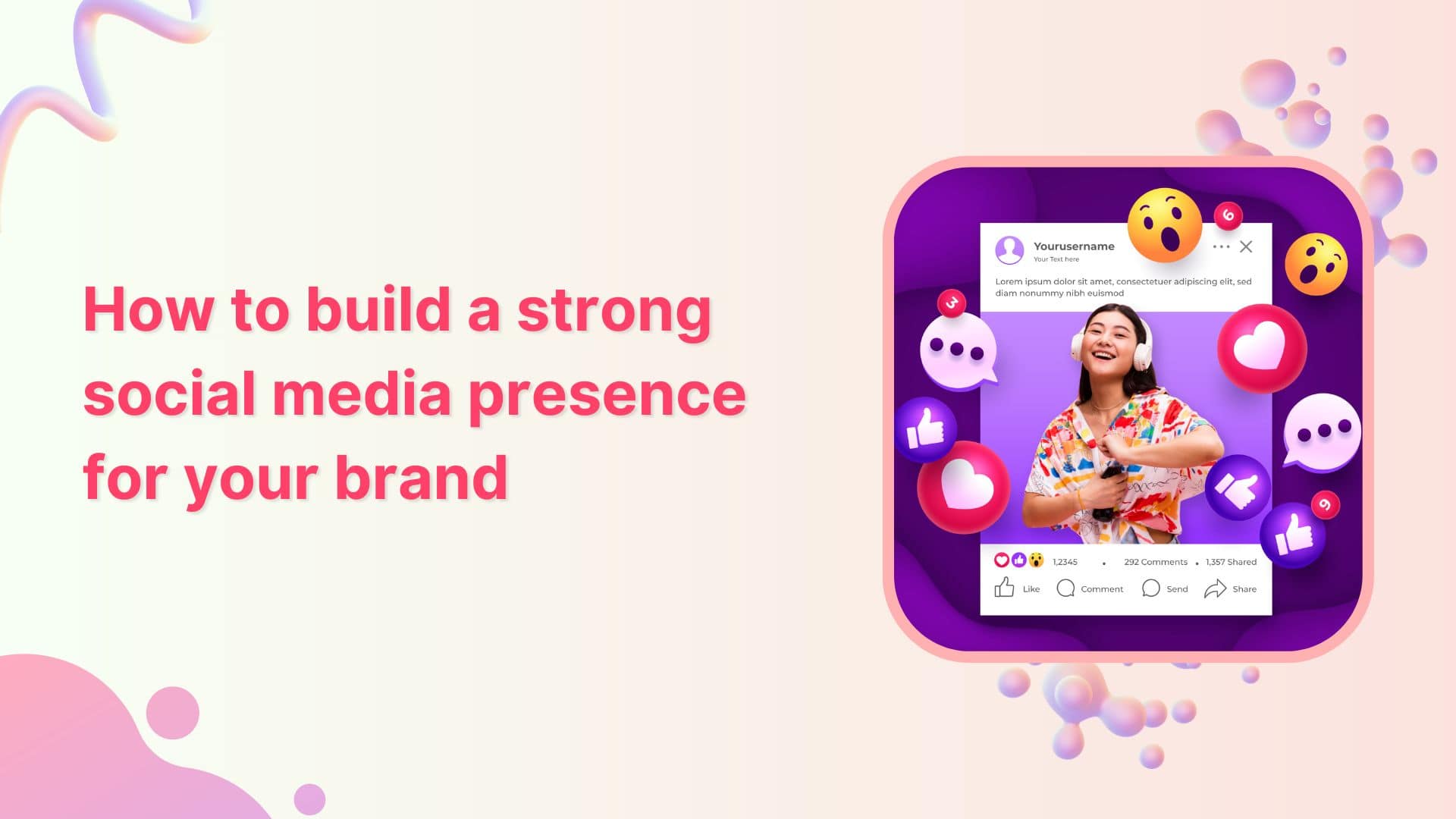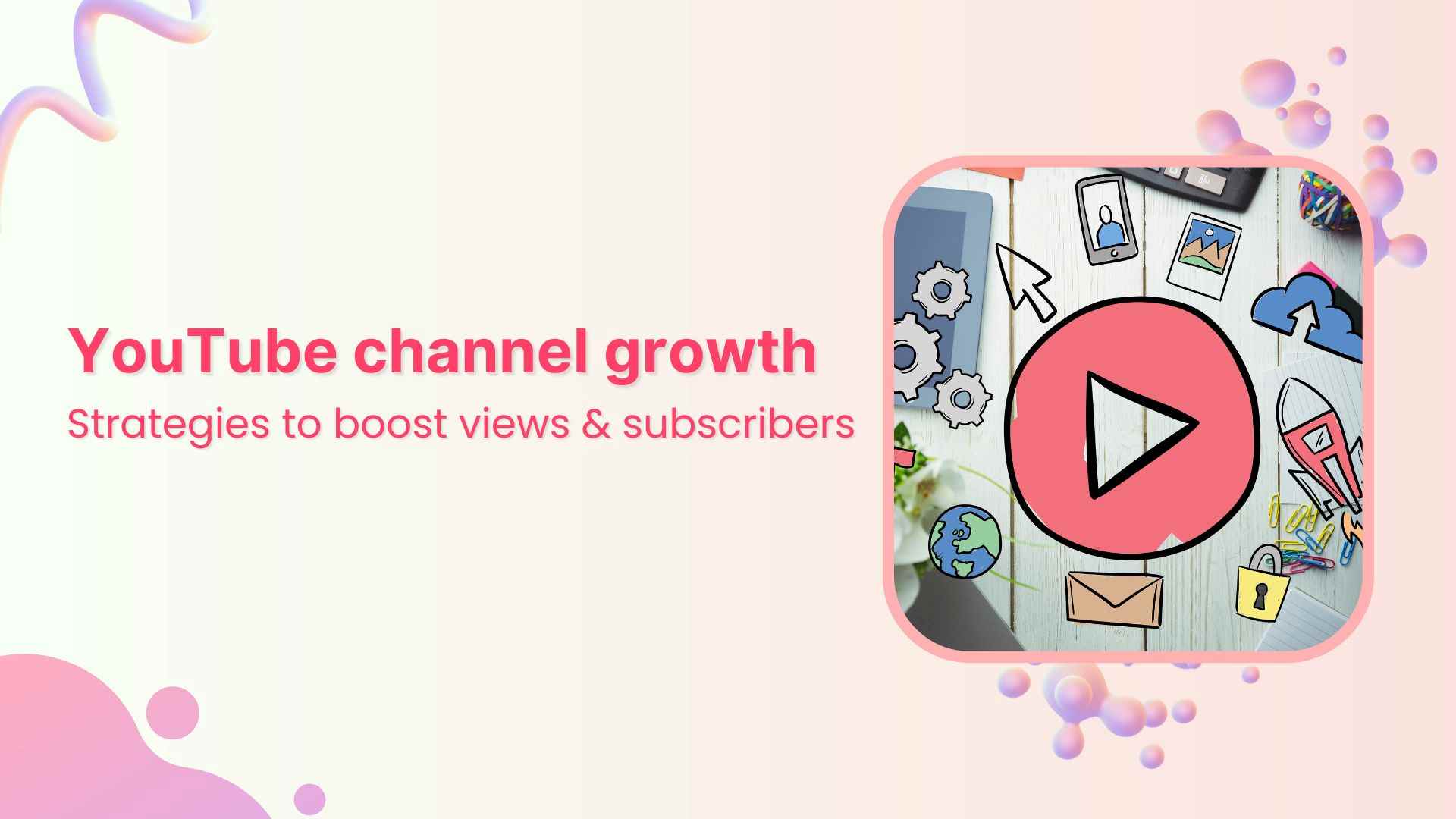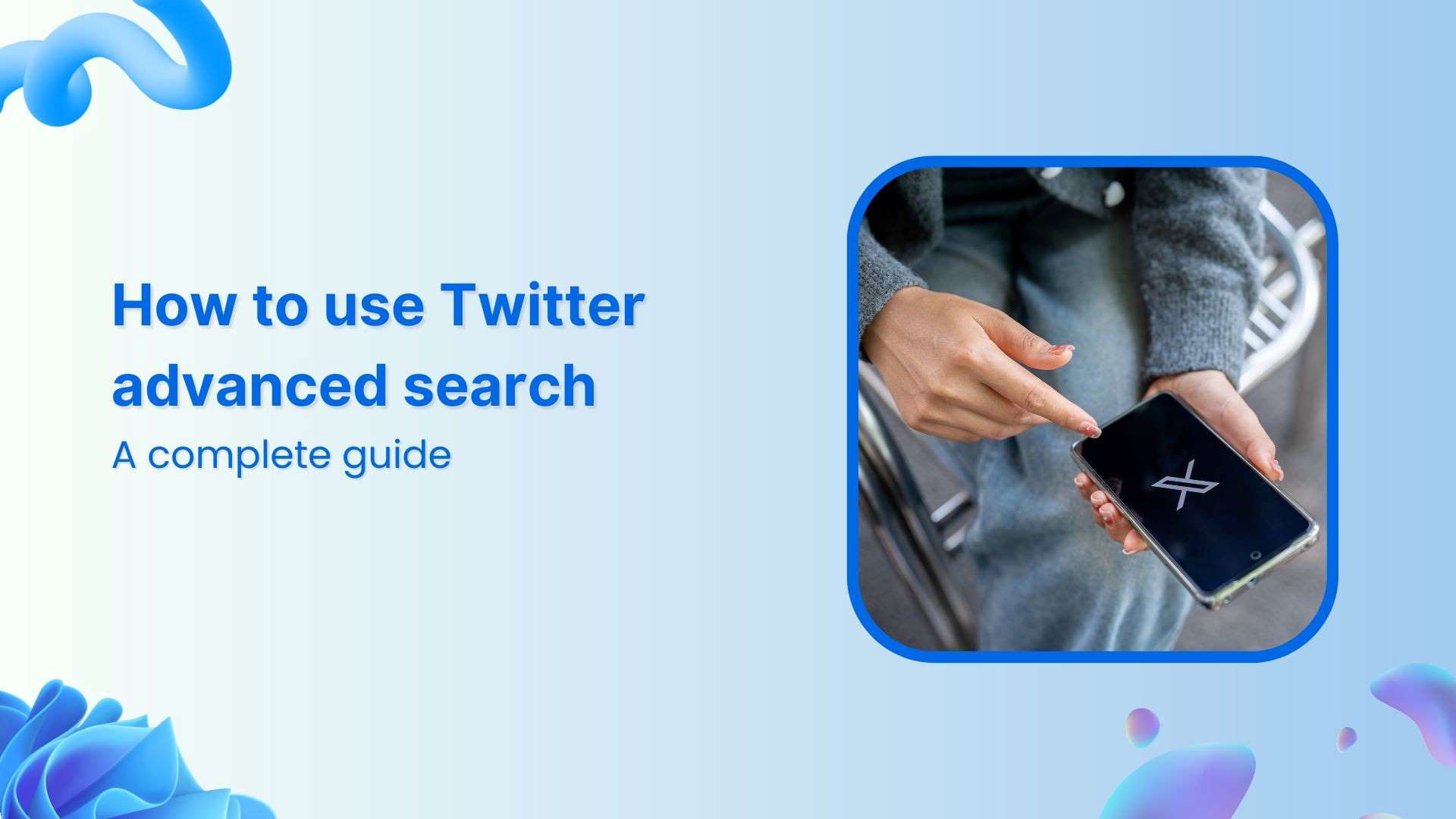Bulk-generate & schedule posts in seconds with Smart Scheduling. Try now!
9 Social Media Management Strategies for Agencies

Does being active on social media overwhelm you?
Chances are, your agency’s social media channels are all set, but you struggle to keep them active. Inquiries rot in your Twitter inbox while your Facebook page is like a barren land. After all, running social media channels for a business is not a piece of cake.
It takes effort, consistency, resources, and above all, patience to wait for results. At the end of the day though, effective social media branding strategies for agencies can be very rewarding.
You see, about 3.6 billion people worldwide use social media. This means you need to be on social too:
- Connect and nurture relationships with potential clients
- Show yourself as an authority in your field
- Maintain your brand image and reputation
In short, your absence on social media is limiting your growth as being active on social is essential. I get it though, social media management is never easy. However, it can be easy with the right tips and tactics.
Related Read: How to Start a Social Media Marketing Agency
So, without further ado, let’s walk you through 9 tips that can help you win at social media. Let’s dive in:
- Settle on your brand voice
- Audit your social channels
- Decide what you’d share on your social channels
- Create social media strategies for the channels you join
- Use a project manager to streamline the process
- Create a social media calendar
- Schedule for later
- Analyze and reiterate
- Practice social listening
1. Settle on your brand voice
You’ve advised your clients on the importance of having their own brand voice. It’s time you take your own advice. A distinct voice will help you stand out in a crowd of agencies. It also makes you recognizable across platforms.
If you don’t already have a brand voice, figure it out and then stick with it through and through. But how exactly can you develop a brand voice?
Here’s some quick help:
???? Study your target audience and communicate in their voice. Along with your audience’s demographics, tap into their psychographics. This way, you can create a voice that resonates with your followers, helping them connect with you better. While at it, also research the brand voice of your competitors to get an idea. But remember: don’t ever copy your competitors.
Describe your agency’s voice in three words and create a chart around them. For instance, you describe your brand’s voice as quirky, confident, and positive. Now assign adjectives to these brand voice attributes and add do’s and don’t in front of them.

???? Share your brand voice guide with your team. This will ensure that your copywriters, blog writers, and social team, all use the same brand voice.
Must Read: How To Write A Client Winning Social Media Proposal
2. Audit your social channels
Chances are you are a new agency working on which social channels to join or you’re an established agency looking to improve your social media management.
In either case, consider running a fine-tooth comb through your social channels. Ask yourself: do I really need to be on this social channel? If your gut answers with a yes or no, I’d recommend you ignore it as you can get a better answer by understanding your target audience.
Look for where your target audience is and join that channel. Also, consider the benefit each social channel offers and join accordingly. For instance, if you’re a visual design agency, consider joining Instagram because the platform offers you the benefit of showcasing your work. Instagram growth solely will help you grow your brand a lot. If you’re an advertising agency, go for Facebook and Instagram as they give you the option to post different types of content including video.

Moreover, if you’re a content writing agency, Twitter and LinkedIn are better options for you because they target an audience of thought leaders and readers. These networks also offer a community-building aspect if you’re into relationship marketing.
In sum, select a few social channels and focus on growing engagement there instead of spreading yourself thin by having a profile up on each social network.
Related Read: 8-Step Marketing Client Onboarding Process For Agencies
3. Decide what you’d share on your social channels
Take to the drawing board and list out whatever you think your audience will find valuable. Would they like to read an interesting blog post? If so, add ‘share valuable articles’ to your list of content to share on social media.
At the same time, decide on the broad topics that you’ll talk about to create your social content and create a mindmap on more specific subtopics that can support them. For instance, if you’re a content marketing agency, it makes sense to share the following:
- Impressive case studies in the content marketing sphere
- Mind-blowing stats on who uses content marketing and its ROI
- Helpful content marketing tools
- BTS content for connecting with your audience
LYFE Marketing, a digital marketing agency based in Atlanta, shares all of the above on its fastest-growing Instagram accounts account. In its Insta Story Highlights, the agency shares its reviews, client results give tips, and even shows BTS content.
On the other hand, its RSS feed is packed with valuable stats and information on how to better run your business. Take a look for yourself:

Circling back, as a content marketing agency, you can cover topics such as content marketing, content writing, and the psychology behind marketing. Build a list of what you’d share on socials.
Ultimately, this will help you in two ways:
- With the content discovery, you’d never run out of ideas of what to share
- Your social media profiles will revolve around specific topics, helping you create well-trimmed profiles that reflect your expertise
And before you go about worrying over the bulk of content that you’ll have to create, know this: you don’t always have to come up with fresh ideas.
Save time by content curation and repurpose the rest of your content into social content. For instance, you can repurpose an infographic into a social post or collect relevant content from other sources and share it timely.
To curate blog posts for sharing on your social media, use an app such as Content Studio, which shows you newly published blog content from the blogs you’ve subscribed to.
4. Create a social media strategy for the channels you join
A social media branding strategy gives you an action plan of what you want to do to grow your audience. For a social media strategy for startups, start with outlining your goals, then lay out some strategies to meet those goals. Also, settle on the right metrics i.e social media KPIs you’d measure to understand how well you’re reaching your goals.
For instance, if your agency has a Twitter account, your goals can look like this:
- Increase brand awareness
- Build a community around your business
- Improve customer service
- Increase revenue by sharing offers
- Boost website traffic
A good strategy to meet these goals can include joining relevant Twitter chats, sharing valuable tweets, and engaging with your target audience by leaving comments.
Express Writers does a great job at Twitter marketing. It doesn’t only showcase its services, but it also shares blog posts for directing traffic to its website and shares its offers to generate leads.

Similarly, your Instagram marketing strategy can include using IGTV to go live and connecting with people via video, leaving comments for encouraging engagement, and sharing links to your latest blog posts in stories.
Don’t forget to take a look at what goals your competitors are accomplishing with their social presence. Don’t replicate what they do, but create better strategies to win at those goals as well. You can also take inspiration from competitors and save all the posts that you like for later. Facebook and Instagram both have the option to privately save posts that you like.
Tip: Make your social media strategy human by adding your name at the end of the posts you share. This helps your audience understand who you are and connect with you better as they’re not being bombarded with content from an anonymous poster.
5. Use a project manager to streamline the process
A project manager such as Trello can help you here. But why do you need it? Your team possibly comprises graphic designers working on the visuals, a content manager who has all the blog posts to share, a marketing head with all the offers and updates, and more such members.
With a project manager, all teammates can collaborate in one place, sharing all the ideas on what content to post on social media.
In short, you get two things out of a visual content planner:
- You have a one-stop space to jot down social media content ideas and collect content before you add it to your scheduler
- You have a place to communicate ideas of what to share on social media with your team. For example, your team can share BTS pictures to share on your social channels. Similarly, they can share blog pieces to share.
- Related Read: How to Build an Accomplished Social Media Team for Your Agency
6. Create a social media calendar
You can allot time to engaging on socials daily, but content creation and curation for posting on social media is something that should be done beforehand.
With a content calendar for your social media channels, you get the following benefits:
- You can stay organized rather than wondering in the eleventh hour what needs to be posted next.
- A social media calendar tool also saves time and reduces pressure as you have everything planned down to the T.
- The chances of posting content with typos or other errors go down since a calendar can serve as a draft for your social media strategy. Write drafts in one sitting. Polish them later.
- You post consistently without a miss on rainy days. With everything planned you get more time to spend on engagement.
- It helps you plan ahead in case of holidays and other international days.
Keep in mind that you should never post the same content on every social media platform. After all, each network has different requirements with regard to the content you post.
For instance, the size of images you post on Instagram differs from that which is applicable for Twitter posts. Moreover, captions on Instagram tend to be longer and include more hashtags than your tweets.
One last tip: to fill up your content calendar, use the 80/20 rule. This means 80% of your content should be created in advance and scheduled. The rest of the space should be left for trending posts on social media that can be created at the moment.
What’s more, leave space in your calendar to regularly talk about your achievements as an agency and to share new client testimonials.
Related Read: Best Social Media Calendar Tools in 2023
7. Schedule for later
Even if you have all your content ready for posting in the days ahead, you still may end up lacking time to post it. Moreover, posting at the last minute puts pressure on you, as you hurry to log in to each social account and follow the drill of uploading the photo, copy-pasting the caption, and adding in hashtags.
This means there’s a chance you may post the wrong content, delete a picture immediately, and then redo the process. It’s worse when you realize you’ve posted something you shouldn’t have and your audience has already reacted. ????
This is why scheduling your content for automatic posting is a better idea. It allows you to be consistent and saves you time as well. How does a scheduler save you time, you ask?
With a social media scheduler, you can post content to all connected accounts from one place instead of having to separately log into LinkedIn, Facebook, Twitter, and other channels and post at different times throughout the day.
Adding your posts for the week or so in a scheduler also benefits you by:
- Allowing you to post content in different time zones. This is a helpful feature for remote teams that don’t have their social media manager located in the same country their audience is in.
- Enabling you to view analytics and improve your social content strategy. You can see which posts do well and which don’t. This allows you to plan better and create posts your audience is more likely to interact with.
There are many social media schedulers out there, but it’s wise to choose one that caters to several of your needs. Want a suggestion? Take ContentStudio for a spin.
ContentStudio makes social media management for agencies super easy by enabling you to automate social media and schedule posts for later. The web app has an editorial calendar as well where you can lay out your social media plan. This means you get to kill two birds with one stone.
Some tips for scheduling your posts and getting the most engagement out of them:
???? Don’t post exactly the same content on all socials. Apart from visual content, also tweak the caption to match the requirements of different social media networks.
???? Schedule posts to share them at the times when your audience is most engaged. Note that you’ll need to test which time is best for posting for each channel separately.
???? Lastly, decide on how often you should post on social media for each social network. For instance, tweeting up to 7 times a day is good for business, but when it comes to Instagram stick to sending out just one daily post when your audience is most active.
You can learn more about the best times to post on each network and how many posts to send out in a day from our full guide here.
Related Read: How To Manage Post Approvals With ContentStudio
8. Analyze and reiterate
Almost all social media channels give you an overview of how your posts are performing. By diving into these analytics, you will be able to determine which posts have done better than others and which have not received much attention from your followers.
If you’re using ContentStudio, you can also keep an eye on your social media analytics with it.
Broadly speaking, there are two things that you should keep an eye on when it comes to social media analytics:
- Audience engagement. Look at which posts have organically reached wider and which paid campaigns have performed better. Notice which types of posts get more followers to take an action such as liking, commenting, or sharing.
- Referral traffic. Which types of blog posts or offers are getting more link clicks and bringing more traffic to your website, which is the ultimate goal.
By tracking the performance of your posts, you will be able to create better content as well as repost content that has done well in the past. You will also be able to determine which socials are working best in your favor.
Furthermore, taking social media analytics seriously can help you in various ways from making small tweaks such as adding more actionable words in the caption to deciding what times your audience is most active.
Take it a step further and spy on your competitors to see what may work for you as well. You can use social media management tools to dive into the analytics of your competitors’ social media.
9. Practice social listening
What’s that, you ask? Social listening involves lending a close ear to what people are saying about your brand online. It covers who is talking about your agency, in what context they’re mentioning your agency, and what people are saying about your competitors as well.
By practicing social listening, you will be able to make improvements to your content strategy quickly. You will be able to get back to any comments your clients make. In short, social listening helps you stay ahead of the social game.
Primarily, you need to focus on:
- Brand mentions
- Relevant hashtags
- Relevant keywords
- Competitor mentions
- Industry trends
Here are some ways you can use social listening to grow and improve your agency’s social media presence:
???? Respond to clients that have something good to say about you. This way, you can ensure customer loyalty.
???? Utilize social listening to help with reputation management by addressing queries or negative words being said about your agency in a timely manner.
???? ????Track your competitors’ mentions to see what drives clients toward them. Their success on social can also motivate you and give you an idea of how you can improve your presence on social.
???? You can also find new leads by keeping note of relevant keywords and hashtags. You can strike a casual conversation with them to build a relationship or offer help directly.
???? Lastly, connect with influencers who align with your agency’s values. You can collaborate with these influencers to further grow your presence on social media.
Related Read: How to Find Social Media Clients for Your Agency
Final thoughts
An active presence on social channels where your target audience hangs out allows you to come off as a reliable business and build great relationships with clients. With the right tips and tools for social media management for agencies, you can keep clients happy, stay on top of industry trends, share better content, drive more engagement, and much more.
Also Read: Social Media Approval Workflow for Agencies: A Step-by-Step Guide
Recommended for you


Powerful social media management software
14-day free trial - No credit card required.



